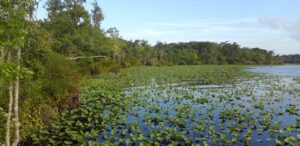 On Thursday, the International Union for the Conservation of Nature added the migratory monarch butterfly to the “red list” of threatened species.(1) One of the most recognizable butterflies in the world, the monarch butterfly (Danaus plexippus) is famous for its seasonal migration. Millions of monarchs migrate south from the United States and Canada to California and Mexico for the winter.(2)
On Thursday, the International Union for the Conservation of Nature added the migratory monarch butterfly to the “red list” of threatened species.(1) One of the most recognizable butterflies in the world, the monarch butterfly (Danaus plexippus) is famous for its seasonal migration. Millions of monarchs migrate south from the United States and Canada to California and Mexico for the winter.(2)
It has distinctive orange wings with black lines and white dots. Monarchs live an average of 6-8 months, weigh under 0.001 ounces, and have a medium wingspan of 3.9 inches. Their move to the endangered list means they are just two distinctions from extinction. The primary causes of their move to the red list are loss of habitat and climate change. Want to help the monarch population during this critical time?
The number one thing you can do is plant native milkweed and supplementary plants. There is a number of native milkweeds to choose from – visit UF|IFAS’s Milkweed Species Native to Florida for the complete list. However, there are milkweeds that are essential for monarch butterflies to be able to complete their life cycle within your garden. Female monarchs prefer to lay on swamp milkweed (Asclepias incarnata) and common milkweed (A. syriaca).(3)
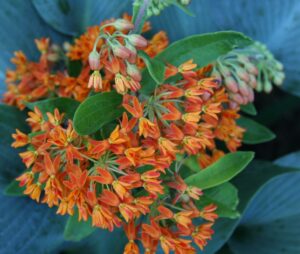
Milkweed is crucial to the diet of monarchs; their distinctive coloring is not an invitation to be eaten but a warning to predators that they are poisonous. They have evolved to not only tolerate but use the toxicity naturally occurring in milkweed to protect themselves by storing it in the veins. Monarchs will feast on all milkweed varieties however, butterfly weed (A. tuberosa) is native to Florida, widely available, and has beautiful flowers.
Supplementary plants are plants of other species that should be planted around milkweed to assist in a healthy ecosystem. These are plants that should be chosen based on each individual location’s soil, sun, and water retention rates as well as hardiness zone. Please remember to always choose native plants to increase the health of your soil and the natural benefits of your garden.

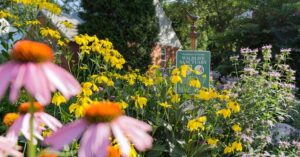 Next Saturday, July 30th, Native Nursery of Tallahassee is hosting a Florida-Friendly Landscaping class. From 10-11 am, learn how to help protect Florida’s environment and make your yard a wildlife habitat. Rachel Mathes will teach the class how to use the Nine Principles of Florida-Friendly Landscaping, her goals for the program, and then guide the class through the steps to creating a more sustainable yard.
Next Saturday, July 30th, Native Nursery of Tallahassee is hosting a Florida-Friendly Landscaping class. From 10-11 am, learn how to help protect Florida’s environment and make your yard a wildlife habitat. Rachel Mathes will teach the class how to use the Nine Principles of Florida-Friendly Landscaping, her goals for the program, and then guide the class through the steps to creating a more sustainable yard.  Coastal Wildlife Removal is a local, fully licensed, and insured animal removal company operating in the Florida panhandle. They travel throughout Tallahassee to Pensacola, Destin, Niceville, and Panama City. They specialize in safe, humane animal removal of local Florida wildlife. Additionally, they offer exclusions to prevent future infestations and attic restoration.
Coastal Wildlife Removal is a local, fully licensed, and insured animal removal company operating in the Florida panhandle. They travel throughout Tallahassee to Pensacola, Destin, Niceville, and Panama City. They specialize in safe, humane animal removal of local Florida wildlife. Additionally, they offer exclusions to prevent future infestations and attic restoration.  It took 8 years of hard work, funding, meetings, planning, and construction to bring the Cascades Trail Skateable Art Park & Coal Chute Pond to the public. It was a $2.8 million investment that officially opened in June 2022. The park is located at 810 FAMU Way.
It took 8 years of hard work, funding, meetings, planning, and construction to bring the Cascades Trail Skateable Art Park & Coal Chute Pond to the public. It was a $2.8 million investment that officially opened in June 2022. The park is located at 810 FAMU Way.
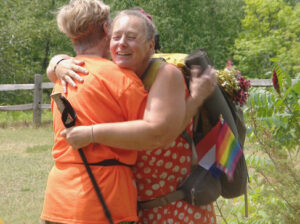
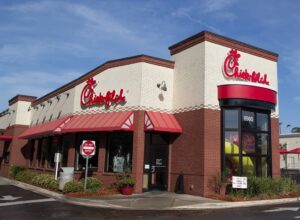 Chick-Fil-A is on its way to Jackson County. It will be located on Highway 71 South on the right just past the interstate. The Jackson County Economic Development Committee is hopeful that contractors will break ground on the standalone location at the former Malloy Glad Farms by early Fall. The doors are tentatively planned to open by late 2022 to early 2023 depending on factors such as supply procurement and weather delays. This project has been in development since February 2020.
Chick-Fil-A is on its way to Jackson County. It will be located on Highway 71 South on the right just past the interstate. The Jackson County Economic Development Committee is hopeful that contractors will break ground on the standalone location at the former Malloy Glad Farms by early Fall. The doors are tentatively planned to open by late 2022 to early 2023 depending on factors such as supply procurement and weather delays. This project has been in development since February 2020. 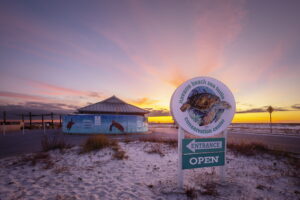 The Navarre Beach Sea Turtle Conservation Center (NBSTCC) is “Giving sea turtles more tomorrows through conservation, education, and research.” A nonprofit organization founded in 2013, the NBSTCC is a working conservation and education center. They currently welcome walk-in guests at a reduced capacity Tuesday through Saturday, 10 am – 4 pm. Please note that, due to the reduced capacity, there may be a waitlist; check their
The Navarre Beach Sea Turtle Conservation Center (NBSTCC) is “Giving sea turtles more tomorrows through conservation, education, and research.” A nonprofit organization founded in 2013, the NBSTCC is a working conservation and education center. They currently welcome walk-in guests at a reduced capacity Tuesday through Saturday, 10 am – 4 pm. Please note that, due to the reduced capacity, there may be a waitlist; check their 